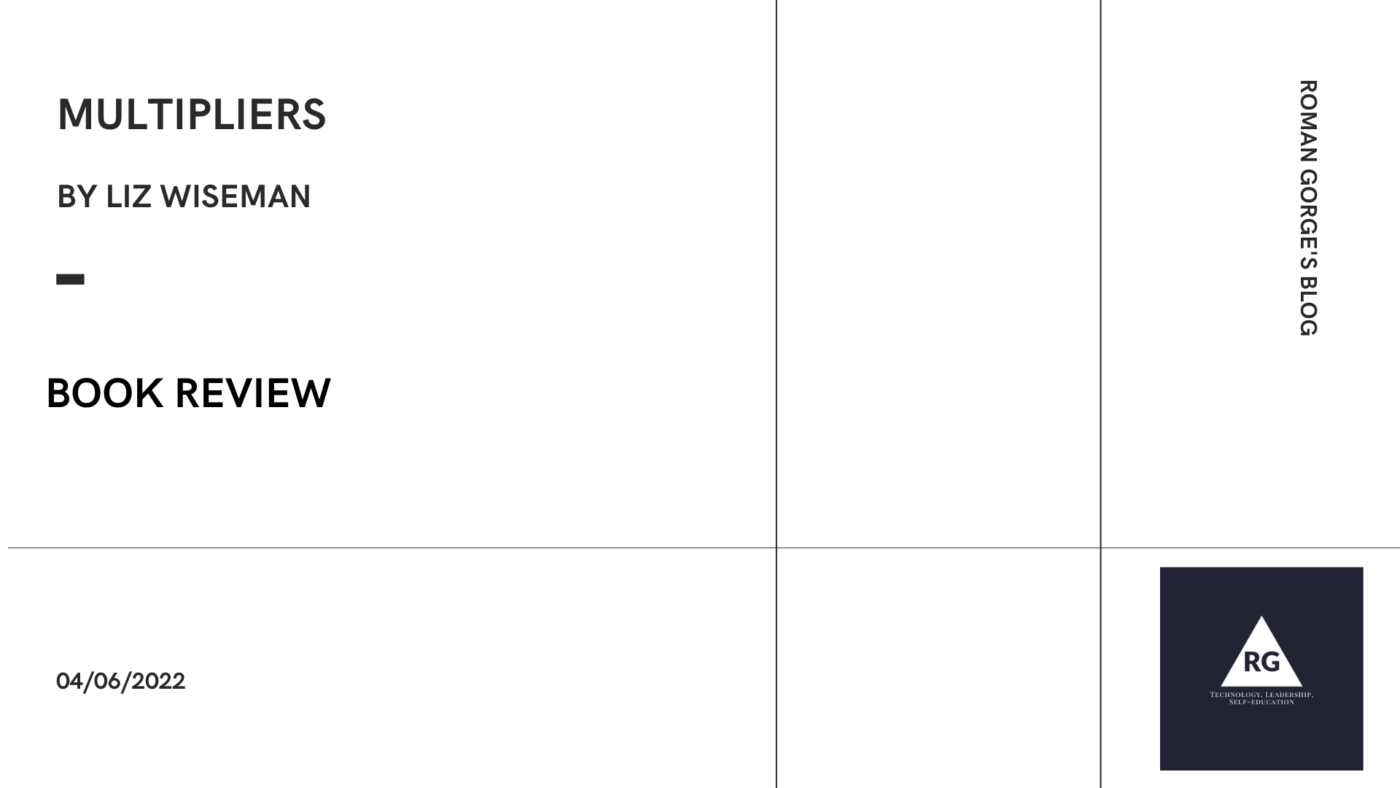Years ago, at the beginning of my career, I learned a simple but powerful idea – people come to work for a leader, not for a company. Talent development and retention is one of the most difficult parts of a people manager’s job. So, how do you “multiply” intelligence of your team?
Even if a company fully equipped with learning materials and encourages employees to develop themselves, if will not going to happen on a large scale without a leader who possesses right skills to help people to grow. But what are those skills? And how to measure them?
A one way to measure these skills is to check if people around a leader become smarter over time or they stall in professional development and degrade? The book uses this specific metric to group leaders into two categories “Multipliers” and “Diminishers”. And it makes a lot of sense – if people grow around a leader, they can contribute more and willing to do it. The book calls it “Multiplier Effect”. And vice versa, if people don’t grow, they will give less and less. They will “quit and stay”, as the author nicely put it.
5 chapters of the book analyze patterns and anti-patters of behavior that help a reader to identify are they a “Multiplier” or a “Diminisher”.
- Talent Magnet vs Empire Builder
- Liberator vs Tyrant
- Challenger vs Know-It-All
- Debate Maker vs Decision Maker
- Investor vs Micromanager
The book describes how patterns above influence people productivity and collective intelligence . This part has helped to see my own flaws as a manager and a leader.
One interesting idea described in the Chapter 1 is “The Logic of Addition”. And I think, may organizations and individuals operate exactly as the book describes it:
Operational leaders entrenched in the logic of resource allocation and addition argue:
1. Our people are overworked.
2. Our best people are the most maxed out.
3. Therefore, accomplishing a bigger task requires the addition of more resources.
Wiseman, Liz; McKeown, Greg. Multipliers (p. 14).
If this logic applies in a growing market, it may work for a long time. But, inevitably, an organization will face a problem that cannot be solved by throwing in more bodies. And what to do when it happens? Increase productivity of an organization by getting more from its people. It is an obvious conclusion that is very difficult to implement in practice. First of all, why people should care about giving more?
The book gives perspective and recommendations how to run a team in a way that people will want to contribute more and will do it voluntarily. Out of all recommendations, one was specifically interesting for me – “Work The Extremes”. The research done by the authors showed it is not necessary have strengths in all Multiplier dimensions. The one can be great in one or two. What is important that there are no obvious weaknesses. I will use this idea in my development plans.

Overall, a great book – 5 out of 5. If you are a people manager, I highly recommend you to read it.
Check out my other book reviews!
